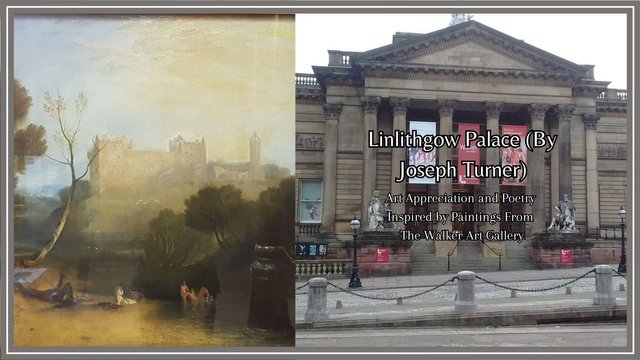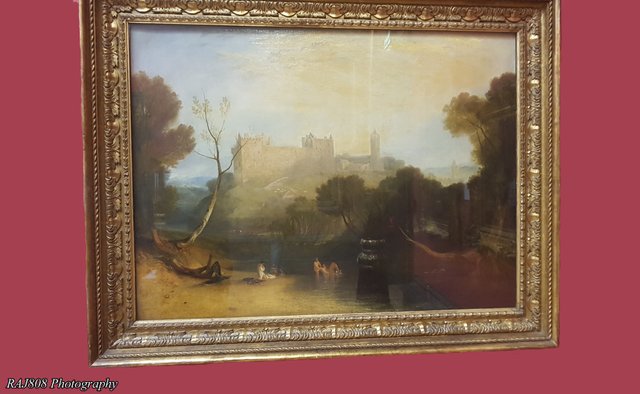The Walker Art Gallery, Liverpool (Linlithgow Palace by Joseph Turner) - Art Appreciation and Haiku #2

in the summer's soft zephyr
on Linlithgow Lock.


Linlithgow Palace (by Joseph Turner)
On the south shore of Linlithgow Lock near Edinburgh stands a palace that has been both a Scottish royal residence and a military stronghold for hundreds of years.

However, Linlithgow Palace was destroyed by fire in 1746 when soldiers of the Duke of Cumberland's army, who were bivouacked in the palace, accidentally burned it down. Turner returned to the area to make sketches in 1802 which he later used for this painting, adding details of the palace partly from the ruins and from previous sketches. The palace still stands, surprisingly well intact structurally, as a ruin.
Joseph Turner sacrificed topographical accuracy in this painting for an ordered composition framed by trees, with women bathing in the foreground, a technique characteristic of the tradition of classical landscape painting.
The way this painting deals with light helped inspire Daguerre's later pioneering work in photography as he invented the daguerreotype process.

History of Linlithgow Palace
The present day palace was built in 1424 by James I of Scotland, following a devastating fire that burnt down the previous residence. With its location between Stirling Castle and Edinburgh Castle, it soon became a popular ‘pleasure palace’ for royals to visit on journeys between the two, with many of the Stewarts – or Stuarts – residing there throughout its history.
The Stewart queens enjoyed the peace and fresh air, and Linlithgow would serve as a nursery for many of the family’s royal infants, including James V who was born there in 1512, and Mary, Queen of Scots in 1542.
From 1603 Linlithgow Palace’s era as a royal pit stop began to deteriorate however, as the royal court moved to London under James VI when he left to claim the English throne as James I. The palace’s decline was only furthered when it was destroyed by a fire in 1745.
In 1501 James IV (1488-1513) cleared the ground of the abbey and built a palace for himself and his bride Margaret Tudor (sister of Henry the VIII). Further alterations were made by his successor James V (1513-1542).
Source: historyhit.com
Thanks for reading 🙂🌿

Camera used - Samsung S7 Smartphone
If you have enjoyed this Haiku and art appreciation post, please check out my homepage @raj808 for similar content.


